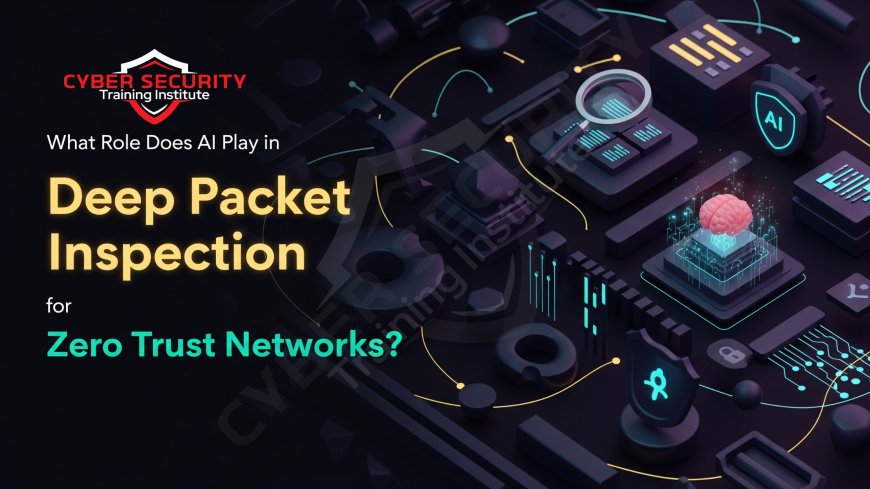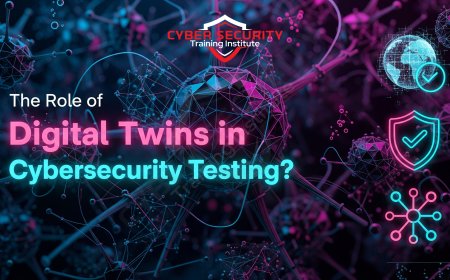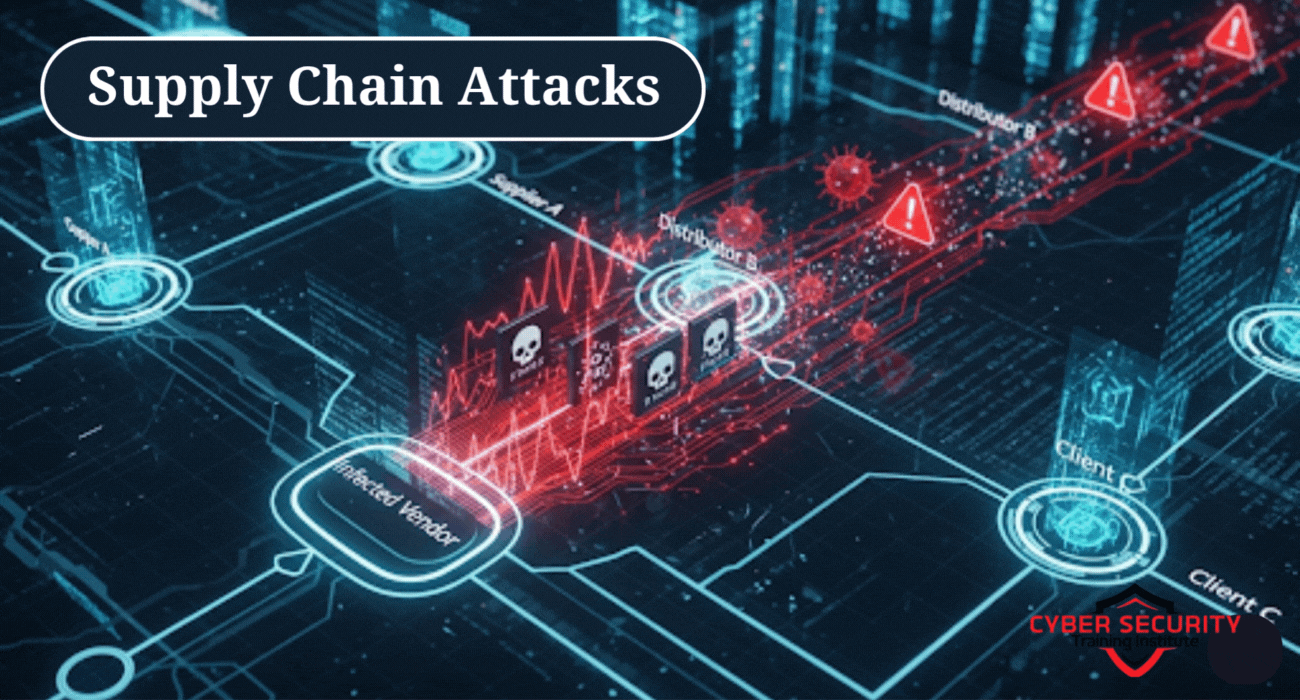What Role Does AI Play in Deep Packet Inspection for Zero Trust Networks?
In Zero Trust networks, AI's primary role in Deep Packet Inspection (DPI) is to enable real-time, context-aware traffic classification and threat detection, even within encrypted streams. AI enhances DPI by accurately identifying applications, detecting novel threats through behavioral analysis, and providing the rich intelligence needed for a Zero Trust Policy Engine to make dynamic access decisions. This detailed analysis for 2025 explains why AI has become an essential component of modern Deep Packet Inspection and a critical enabler of Zero Trust security. It contrasts the old, port-based firewall with the new, AI-powered application-aware gateway. The article breaks down the key AI capabilities—from Application ID to Encrypted Traffic Analysis—that provide the deep visibility needed to enforce granular, least-privilege policies. It serves as a CISO's guide to leveraging AI-DPI as the foundational "eyes and ears" of a modern, resilient security architecture. This detailed analysis for 2025 explains the fundamental reasons why traditional, siloed security tools are no longer effective against the intelligent and adaptive threats powered by AI. It provides a clear, comparative breakdown of where legacy systems like antivirus and firewalls fail and how their modern counterparts—like EDR and XDR—use AI-powered behavioral analysis to succeed. The article serves as a CISO's guide to modernizing the security stack, emphasizing the critical need to move from a reactive, signature-based posture to a proactive, context-aware, and resilient defense architecture.

Table of Contents
- Introduction
- The Static Port-Based Firewall vs. The AI-Powered Application-Aware Gateway
- The Zero Trust Visibility Challenge: Why DPI Needed AI
- How AI-DPI Powers a Zero Trust Policy Decision
- The Role of AI in Modern Deep Packet Inspection
- The Encryption Blind Spot and Performance Trade-Offs
- The Future: AI-DPI for OT and IoT Environments
- A CISO's Guide to Leveraging AI-DPI in a Zero Trust Architecture
- Conclusion
- FAQ
Introduction
In Zero Trust networks, AI's primary role in Deep Packet Inspection (DPI) is to enable real-time, context-aware traffic classification and threat detection, even within encrypted streams. Artificial intelligence enhances traditional DPI by using machine learning to accurately identify applications and services regardless of the port they use, detect novel and evasive threats based on behavioral analysis of the traffic, and provide the rich, real-time intelligence needed for a Zero Trust Policy Engine to make dynamic, granular access control decisions. In short, a Zero Trust architecture demands that we continuously verify every connection, and AI-powered DPI is the technology that provides the deep, intelligent visibility required to make that verification meaningful in 2025.
The Static Port-Based Firewall vs. The AI-Powered Application-Aware Gateway
A traditional, legacy firewall operated like a simple gatekeeper with a very basic set of rules. It made decisions based on static, low-context information like source and destination IP addresses and port numbers. A typical rule was: "Allow all traffic from the internal network to the internet on TCP Port 443 (the standard port for HTTPS)." This was a blunt instrument. It had no idea if that Port 443 traffic was a legitimate employee accessing Salesforce, a non-compliant employee using a P2P file-sharing app, or malware communicating with its command-and-control server. To this firewall, all HTTPS traffic looked the same.
A modern Zero Trust enforcement point (like a Next-Generation Firewall or a SASE gateway) using AI-powered DPI is an application-aware, intelligent gatekeeper. It doesn't just see Port 443; it looks deep into the traffic to understand its true nature. The AI-DPI engine can identify the specific application (e.g., "this is Microsoft Teams traffic"), the user associated with the traffic (by integrating with the identity provider), and the content of the traffic (looking for threats or sensitive data). This allows it to enforce a much more granular and intelligent policy, such as, "Allow the sales team to use Salesforce, but block them from uploading customer data to their personal Dropbox account," even though both might be running over the same port.
The Zero Trust Visibility Challenge: Why DPI Needed AI
The need to embed AI into the core of DPI is a direct response to the challenges of securing modern networks:
The Rise of Universal Encryption: With over 95% of web traffic now encrypted, traditional DPI, which relied on reading the plaintext content of packets, became effectively blind. AI-powered Encrypted Traffic Analysis (ETA) became essential to find threats without mass decryption.
The Evasiveness of Modern Applications: Modern applications and malware frequently use techniques like "port hopping" or disguise their traffic as generic HTTPS to evade simple port-based firewall rules.
The Principle of Least Privilege: A core tenet of Zero Trust is to grant the "least privilege" access necessary. This requires the ability to create highly granular policies based on the specific application being used, not just a general port number.
The Need for Machine-Speed Analysis: The sheer volume and speed of traffic on a modern enterprise network are too great for a static, rule-based system or a human analyst to handle. Only an AI model can perform this deep analysis at line speed across millions of concurrent sessions.
How AI-DPI Powers a Zero Trust Policy Decision
In a modern architecture, AI-DPI is the core sensor that feeds the decision-making "brain":
1. Traffic Interception and Analysis: A user's traffic is intercepted by a Zero Trust Policy Enforcement Point (PEP), such as a SASE cloud gateway or a Next-Gen Firewall at the office perimeter.
2. AI-Powered Classification: The platform's AI-DPI engine instantly analyzes the flow. It uses a combination of techniques—from analyzing the TLS handshake to applying machine learning models—to classify the traffic with high confidence (e.g., "This is a file upload to OneDrive by user 'anita.p' from the marketing department").
3. Real-Time Policy Engine Query: The enforcement point takes this rich, contextual data and queries the central Zero Trust Policy Engine. It asks, "Does the current policy allow a user from the marketing department to upload files to OneDrive?"
4. Granular Policy Enforcement: The Policy Engine returns a real-time, yes/no answer, and the enforcement point executes it. This entire loop, from interception to enforcement, happens in microseconds, allowing for highly granular and dynamic control over network traffic without impacting user experience.
The Role of AI in Modern Deep Packet Inspection
AI has transformed several core functions of DPI, making it a viable and essential tool for Zero Trust:
| AI-Powered Capability | Description | How It Enhances DPI | Importance for Zero Trust |
|---|---|---|---|
| Application Identification (App-ID) | The ability to accurately identify the specific application that is generating the network traffic, regardless of the port or protocol. | AI models are trained on the unique traffic patterns and signatures of thousands of different applications. This allows them to identify an app even if it is trying to evade detection. | This is the absolute foundation. You cannot create a granular, "least privilege" access policy if you cannot accurately identify the application you are trying to control. |
| Behavioral Threat Detection | The ability to detect novel or "zero-day" threats by identifying anomalous behavior within a traffic flow. | The AI learns the normal behavior for a protocol (like DNS) and can then spot a threat, like a DNS tunneling attack, because its traffic patterns are anomalous, even if no known malicious signature is present. | Allows the Zero Trust architecture to protect against unknown threats, not just known-bad ones. |
| Encrypted Traffic Analysis (ETA) | The ability to identify threats within encrypted traffic without decrypting it. | As we've discussed, the AI analyzes metadata and packet sequences to find the statistical fingerprints of malicious activity hidden within the encrypted "tunnel." | Solves the "encryption blind spot," giving the Zero Trust engine the visibility it needs while still preserving user privacy. |
| Content and Data Identification | For traffic that is decrypted, the ability to understand the content and identify sensitive data. | AI and Natural Language Processing (NLP) can be used to scan the content of decrypted traffic to identify and prevent the exfiltration of sensitive intellectual property or customer PII. | This enables the Zero Trust model to extend beyond just access control to include data loss prevention (DLP). |
The Encryption Blind Spot and Performance Trade-Offs
Despite the power of AI, two fundamental challenges remain for any DPI-based system. The first is the encryption blind spot. While AI-powered ETA is remarkably effective at detecting many types of threats based on metadata, it cannot see the actual content of the encrypted payload. This means that a targeted, "low-and-slow" data exfiltration attack that uses a legitimate-looking HTTPS connection to a trusted site can still be invisible to ETA. This is why a mature security program still requires a targeted, policy-based TLS decryption strategy for the highest-risk traffic categories.
The second challenge is performance. Running multiple, complex AI models to analyze millions of packets per second at line speed requires an enormous amount of computational power. This has been a major driver for the shift from on-premise firewall appliances, which have finite hardware resources, to massively scalable, cloud-native SASE platforms.
The Future: AI-DPI for OT and IoT Environments
The next major frontier for AI-powered DPI is securing the world of Operational Technology (OT) and the Internet of Things (IoT). These environments are filled with devices that use a vast number of non-standard, often proprietary, network protocols. It is impossible for security vendors to manually create decoders for all of them. The leading innovators in this space are now using unsupervised AI models that can be deployed in an OT network to automatically learn the grammar and syntax of these unknown protocols. By learning what "normal" looks like for a specific industrial protocol, the AI can then detect any anomalous or malicious command, providing unprecedented visibility and Zero Trust control for our most critical infrastructure.
A CISO's Guide to Leveraging AI-DPI in a Zero Trust Architecture
As a CISO, ensuring you have this deep, contextual visibility is a core part of your Zero Trust strategy:
1. Choose Security Platforms with a Mature AI-DPI Engine: When evaluating vendors for your Next-Generation Firewall or SASE platform, you must deeply scrutinize the maturity, accuracy, and breadth of their application identification (App-ID) capabilities. This is the foundation of all your other policies.
2. Use App-ID to Build Granular, "Least Privilege" Policies: Once you have the visibility, use it. Work with your network security team to move away from broad, port-based rules and towards a granular, application-aware Zero Trust policy that grants access based on the specific application and user identity.
3. Integrate DPI Findings with Your Broader XDR Platform: The application context provided by your AI-DPI engine is an incredibly valuable signal. Ensure it is being fed into your central XDR or SIEM platform to be correlated with endpoint and identity data for even richer threat detection.
4. Develop a Risk-Based TLS Decryption Policy: You cannot and should not decrypt everything. Work with your security architects and legal team to develop a clear, targeted policy that defines which specific categories of traffic (e.g., traffic to unknown websites, traffic from high-risk users) should be subject to decryption and inspection.
Conclusion
The Zero Trust principle of "never trust, always verify" is simple in concept but incredibly complex to implement in a real-world, dynamic network. Its success is entirely dependent on the ability to have a deep, accurate, and continuous understanding of every single packet that flows across the network. In 2025, AI-powered Deep Packet Inspection is the essential technology that provides this critical understanding. By moving far beyond the simple ports and protocols of the past to intelligently identify the users, applications, and threats with a high degree of confidence, AI-DPI serves as the indispensable "eyes and ears" of the Zero Trust Policy Engine, making intelligent, granular, and real-time access control a practical reality for the modern enterprise.
FAQ
What is Deep Packet Inspection (DPI)?
DPI is an advanced method of examining and managing network traffic. It is a form of packet filtering that looks at the content of the data packets as they pass a checkpoint, not just their headers.
How is AI used in DPI?
AI is used to make the analysis more accurate, scalable, and intelligent. It helps to identify applications regardless of their port, to detect novel threats based on their behavior, and to find threats in encrypted traffic without decrypting it.
What is Zero Trust?
Zero Trust is a modern security model based on the principle of "never trust, always verify." It requires that all users and devices, whether inside or outside the network, be continuously authenticated and authorized before being granted access to resources.
What is "Application Identification" or "App-ID"?
App-ID is the core capability of a modern DPI engine. It is the ability to identify the specific application that is generating the network traffic (e.g., distinguishing between Slack, Dropbox, and a piece of malware), even if they are all using the same standard port (like HTTPS/443).
Why is identifying the application so important for Zero Trust?
Because the Zero Trust principle of "least privilege" requires you to create granular access policies based on the specific application. You cannot write a rule to "allow Salesforce" if your firewall cannot accurately identify Salesforce traffic.
What is a Next-Generation Firewall (NGFW)?
An NGFW is a modern firewall that includes more advanced features than a traditional, stateful firewall. AI-powered DPI and App-ID are core capabilities of any leading NGFW.
What is SASE?
SASE (Secure Access Service Edge) is a cloud architecture that combines networking and security services into a single, unified cloud platform. The security services in a SASE platform are heavily reliant on an AI-powered DPI engine.
What is Encrypted Traffic Analysis (ETA)?
ETA is a technique, powered by AI, that allows a security tool to detect threats within encrypted traffic by analyzing its metadata and behavioral patterns, without having to decrypt the content itself.
Is it necessary to decrypt traffic anymore?
For most threat detection, ETA is now the preferred, privacy-preserving method. However, for specific, high-risk use cases like data loss prevention (DLP), targeted, policy-based decryption is still a necessary control.
What is a CISO?
CISO stands for Chief Information Security Officer, the executive responsible for an organization's overall cybersecurity program.
What is a "port"?
In networking, a port is a communication endpoint. It is a number used to identify a specific process or type of network service. For example, HTTPS traffic traditionally uses TCP port 443.
What is "port hopping"?
Port hopping is a technique used by some applications (and malware) to evade simple firewalls by communicating over non-standard or rapidly changing ports.
How does AI-DPI help with OT and IoT security?
OT/IoT environments use many non-standard protocols. The next generation of AI-DPI can use unsupervised machine learning to automatically learn the "grammar" of these unknown protocols, allowing it to detect anomalous and potentially malicious commands.
Does DPI slow down the network?
It can. Performing deep analysis on every single packet is computationally intensive. This is why a key differentiator for vendors is the performance and efficiency of their DPI engine, especially in high-speed data center environments.
What is an XDR platform?
XDR (Extended Detection and Response) is a security platform that provides unified threat detection and response by correlating data from multiple sources. An AI-DPI engine provides the critical "network" data source for an XDR platform.
What is the "principle of least privilege"?
It is a security concept where a user or system is only granted the absolute minimum permissions necessary to perform its specific, authorized functions. Application-aware DPI is essential for enforcing this on the network.
How is this different from a Network Intrusion Detection System (NIDS)?
A traditional NIDS was primarily focused on looking for known attack signatures in unencrypted traffic. A modern security platform with AI-DPI is a much broader capability, focused on application identification, behavioral analysis, and the analysis of encrypted traffic.
What is a "Policy Enforcement Point" (PEP)?
A PEP is the component of a Zero Trust architecture that actually enforces the access decision. This is typically a firewall, a proxy, or a gateway that contains the DPI engine.
How do I choose a platform with good AI-DPI?
You should conduct a proof-of-concept (POC) where you test the vendor's ability to accurately identify the specific, and sometimes obscure, applications that are used in your environment, and to detect evasive threats.
What is the most important role of AI in DPI?
The most important role is to provide the accurate, real-time application and threat context that is needed to make the intelligent, granular access decisions that are the entire foundation of a modern Zero Trust network.
What's Your Reaction?
 Like
0
Like
0
 Dislike
0
Dislike
0
 Love
0
Love
0
 Funny
0
Funny
0
 Angry
0
Angry
0
 Sad
0
Sad
0
 Wow
0
Wow
0








![How to Install RHEL 10 on VMware/VirtualBox [Tutorial]](https://www.cybersecurityinstitute.in/blog/uploads/images/202509/image_430x256_68b56dc967a4a.jpg)







